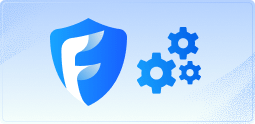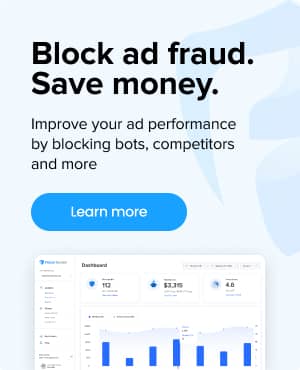What is conversion rate?
Conversion Rate measures the percentage of visitors to your website who complete a desired action. This action can vary from making a purchase, signing up for a newsletter, submitting a lead form, or downloading a resource like a whitepaper.
Understanding conversion rate is not just about numbers – it’s about understanding customer behavior and optimizing your website to foster more meaningful interactions.
How to calculate conversion rate
To calculate conversion rate, divide the number of conversions (desired actions completed) by the total number of visitors, and then multiply the result by 100 to get a percentage.
Here is the formula:
Conversion Rate = (Number of Conversions / Total Number of Visitors) × 100
Example:
You own an ecommerce website selling rare sneakers, and had 5,000 visitors to your site, with 200 submitted orders for purchase (your desired action). In this case, your conversion rate is 4%: (200 conversions / 5000 visitors) x 100.
Why is conversion rate important?
While conversion rate is a simple calculation, it shows you how efficiently you turn visitors into customers or leads. This one metric provides insights into many aspects of the customer journey, and can inform you on areas to optimize like: your ad creative, your website’s performance and user experience.
Higher conversion rates means your website is well-aligned with user needs and expectations, and indicates effective website design, compelling content, and a seamless user journey.
In contrast, a lower conversion rate might signal areas needing improvement, such as website navigation, content relevance, or clarity of your message and call-to-action.
What is a good conversion rate?
A “good” conversion rate varies by industry, market, and the type of action, there is no singular metric for “good” or “bad” conversion rate. However, there are benchmarks by industry.
According to a benchmark study by Wordstream, the average conversion rate in Google Ads is 4.40% on the search network, and 0.57% on the Google Display Network (GDN):
How to improve your conversion rate?
Improving your conversion rate (and campaign performance overall) is an ongoing process that involves several strategic steps. Here are a few that you can review and take action on today:
Create Compelling Content: Content should be relevant, engaging, and valuable to your audience. It should answer their questions, solve their problems, and guide them towards the desired action.
Have a Clear Call-to-Action (CTA): Your CTA should be prominent, persuasive, and clear. It must stand out and guide users smoothly towards conversion.
Optimize Website Design: A user-friendly design is paramount. Ensure your site is easy to navigate, aesthetically pleasing, and responsive across all devices. Ensure a seamless, intuitive, and enjoyable user journey. Every touchpoint should facilitate a positive experience, building trust and encouraging conversions.
Improve Site Speed and Page Load: Website speed is critical. Faster loading times reduce bounce rates and increase user satisfaction, indirectly boosting conversion rates.
Utilize A/B Testing: Test different elements of your website (like headlines, images, copy, CTAs) to see what works best and continually refine your strategy based on your data.
3 Real-world examples of conversion rates
1. E-Commerce Store
Scenario: An online clothing store has a conversion rate of 15%.
Insight: A 15% conversion rate is significantly higher than the average for e-commerce (which typically ranges around 1-2%, 5% is often considered good). Such a high conversion rate suggests strong performance in several areas: highly-targeted marketing campaigns, low-friction website design, customer experience, and an appealing product offering. The store likely has a strong brand reputation, effectively uses of customer data for personalized recommendations, and a streamlined checkout process.
Next Steps: The business should maintain its current strategies while exploring opportunities to scale up its advertising to drive more traffic, as the high conversion rate indicates a strong likelihood of converting new visitors.
2. Online Course Platform
Scenario: An online education platform offers a range of courses, from short skill-based tutorials ($150) to comprehensive professional development programs ($3000+). The conversion rate for short courses is around 20%, but for longer, more expensive courses, it’s around 2%.
Insight: The higher conversion rate for short courses is likely due to the lower price point, has more immediate value, and appeals to a broader audience looking for quick skill enhancement. The lower rate for comprehensive courses, while initially seeming concerning, is actually quite normal given the higher commitment and cost involved. This indicates a more selective, deliberate decision-making process by potential students.
Next Steps: To improve conversions, the platform could offer bundled packages or membership options that provide access to multiple courses at a discounted rate. Additionally, implementing a free trial or a money-back guarantee for the comprehensive courses could reduce the perceived risk and encourage more sign-ups.
3. Local Service Business
Scenario: A local landscaping service has an average conversion rate of 5%, but it fluctuates between 2% and 8% seasonally.
Insight: The variation is likely influenced by seasonal demand for landscaping services. Higher conversion rates in spring and summer, or lower rates during off-peak seasons may simply be driven by demand and customer intent during those times.
Next Steps: The business should optimize its marketing strategies seasonally. During peak seasons, focusing on competitive pricing and service packages may help to capitalize on high demand. During off-peak seasons, the business could shift its marketing to emphasize services relevant to that time of year, like yard clean-ups in fall or snow removal in winter, to maintain a steadier conversion rate (and revenue) throughout the year.
Frequently asked questions
How Long Should I Wait to Evaluate Conversion Rate Changes in Google Ads?
Google Ads recommends at least 2 weeks for their automated systems to find your best users online, however, it depends on your volume of conversions.
You need a substantially significant number of clicks and conversions to make a clear determination of which campaigns are working or not.







